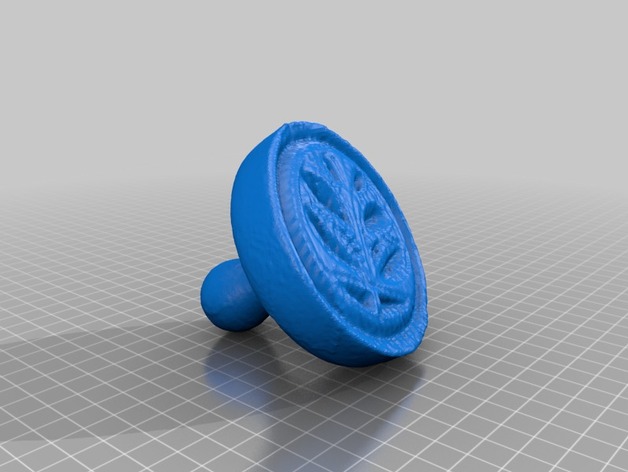
18th Century Butter Print:
thingiverse
Women’s Economic Development, Butter-Making, and a Slice of History This project harnesses the power of 3D scanning technology to replicate and analyze an antique butter print from the collections of the North Carolina Museum of History (Accession # 1916.8.1). This artifact is believed to have originated in Scotland before being brought to America by Scottish immigrants. We aim to create a 3D model on Thingiverse that sheds new light on this little-known piece of history and allows visitors to engage with it up close. Methods and Technology We leveraged the MakerBot Digitizer, a relatively affordable 3D scanner priced at $799, to capture high-quality images of the butter print. This cutting-edge technology employs an advanced algorithm to convert point data into a seamless digital mesh in mere seconds. As our software expert notes, users simply place their object on a rotating surface while the scanner creates detailed 3D scans. Post-scanning, we employed the WinZip program to transform our .thing file into the standard .STL format for editing and refinement before uploading it to Thingiverse. To facilitate editing, we relied on the free Netfabb Basic software, which allows users to fine-tune and prepare models for printing. Through this process, we produced a 3D model of unparalleled precision. Goals By generating an accessible and interactive representation of the butter print, we hope to bridge historical divides by enabling visitors to touch and experience it firsthand. Contrary to what might initially be perceived, our digital representation highlights the intricacies involved in creating such a detailed piece. Furthermore, displaying both physical artifact and replica side-by-side sparks valuable discussion regarding production methods and techniques used during different eras. Moreover, as digital access transcends geographical constraints, it opens doors for greater exploration and interpretation of lesser-known aspects of America’s past, emphasizing the pivotal role women played in cultivating this burgeoning industry. The story told through these butter prints encapsulates a tangible piece of economic development history in rural America. The Origins of a Timeless Butter Print The butter print under examination dates back to 1770-1820 and bears witness to Scotland's skilled artisans' craftsmanship. Crafted by hand, its intricately designed lathe-turned wood embodies both function and beauty. According to records, most 18th-century butter prints originated in the United Kingdom, where woodworking was a prevalent industry skill, yet this piece likely boasts a story of migration as it carries an intriguing mark. Tobacco-themed motifs often depicted the regions they emerged from, hence this possible signification. Many historians point out Pennsylvania’s importance due to its widespread tobacco cultivation and subsequent connection with Scottish immigration. While certain aspects remain a mystery, we are left understanding how dairy made way to rural households. Women indeed led by producing homemade products such as butter for profit, transforming what initially was viewed as an intimate chore into commercial potential. The story shared within these intricately carved wooden pieces transcends economic facts - it shares an appreciation and realization of societal developments, a crucial part that women played.
With this file you will be able to print 18th Century Butter Print: with your 3D printer. Click on the button and save the file on your computer to work, edit or customize your design. You can also find more 3D designs for printers on 18th Century Butter Print:.
